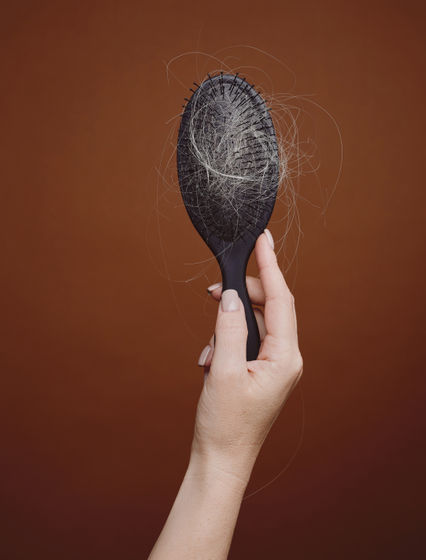An expert explains the science behind gray hair, including questions like 'Does plucking gray hair make it grow back?' and 'Does dyeing your hair make it more likely to turn gray?'

Theresa Larkin, Associate Professor at the School of Medicine at the University of Wollongong in Australia, explained the scientific evidence regarding grey hair, including whether the story that
Is stress turning my hair grey?
https://theconversation.com/is-stress-turning-my-hair-grey-239100
Why does hair turn white?
Hair follicles contain two types of stem cells: keratinocytes, which produce keratin , the protein that is the raw material for hair, and melanocytes, which produce melanin, the pigment in hair and skin. When melanocyte activity declines due to aging or other reasons, melanin production decreases and hair color fades.
When hair loses its pigment, it takes on a pale yellow color due to the keratin, which reflects light, making it appear gray, white, or silver.
According to Larkin, greying hair typically starts between the ages of 20 and 50, with men tending to start greying at the temples and sideburns, while women tend to start at the hairline, such as in the front and back.
Grey hair is thicker, coarser and more coarse than coloured hair, because as we age, stem cells change and the shape of the hair follicle becomes irregular. Interestingly, grey hair grows faster than coloured hair, and in the process, it has been found to consume more energy.

The mechanism behind hair turning white
Gray hair is not only caused by aging; it can also turn gray when oxidative stress damages the hair follicles and the stem cells within them, inhibiting the production of melanin.
Oxidative stress is an imbalance caused by too many harmful
Other environmental factors such as exposure to ultraviolet light, air pollution, smoking, and some drugs may also play a role.
A 2021 study proves that stress can cause more gray hair, and that gray hair can return to normal when stress is relieved.
Gray hair caused by stress may return to its original color when stress is relieved - GIGAZINE

Stress can also cause hair loss , but the process of melanin production is complex and melanocytes are more susceptible to damage than keratinocytes, which is why hair color fades before hair loss.
Larkin also shares some common myths about grey hair and what the science behind them is.
◆1: Plucking out grey hairs will make them grow back
Larkin says it's a myth that plucking grey hairs will make them grow back, but plucking frequently can actually speed up the greying process, as plucking can damage melanocytes.
◆2: Your hair may turn white overnight
There is a legend that Marie Antoinette, the Queen of France, had her hair turn completely white the night before her execution by guillotine. However, this is incorrect; the melanin in hair is chemically stable and does not turn white in an instant.

Experiments in mice have shown that intense psychological stress rapidly depletes melanocytes, but the effects don't appear overnight. Instead, they cause hair to gray at the rate that hair grows - about one centimeter per month.
Also, hair goes through a cycle of growth and then stopping, and since not all hairs enter the growth phase at the same time, it is said that all hairs do not turn gray at the same time.
◆3: Does dyeing your hair make it turn gray faster?
Whether or not it promotes gray hair depends on the dye. Hair dyes can be broadly divided into three categories: temporary dyes that only color the hair temporarily, semi-permanent dyes that penetrate the hair in small amounts and can withstand several washes, and permanent dyes that bleach melanin by chemically reacting with oxidizing agents such as hydrogen peroxide.
Of the three types, temporary and semi-permanent dyes are fine, but permanent dyes can damage the stem cells in your hair follicles, leading to greying and hair loss.
◆4: Is it true that redheads are less likely to have gray hair?
There are two types of melanin, the pigment in hair: dark brown 'eumelanin' and yellow-red 'pheomelanin.' If there is a lot of eumelanin in hair, it will be black or brown; if there is a lot of pheomelanin, it will be reddish-hair; and if there is little of either, it will be blonde.

Of the two types of melanin, the production process of eumelanin is complex and energy-intensive, making melanocytes more susceptible to damage. On the other hand, pheomelanin is simpler and less susceptible to damage than eumelanin, so it is easier to produce pigment even if cell function declines with age. Therefore, redheads also lose melanin as they age, but at a slower pace than people with black or brown hair.
How to prevent gray hair
According to Larkin, the time when hair starts to grey is determined by genetics. However, taking care of your health, reducing stress, and avoiding smoking, excessive alcohol and UV rays may help prevent premature greying. Also, because melanin production is linked to nutrients such as vitamin B12, copper, iron, calcium and zinc, a healthy diet may also help prevent premature greying.
◆ Forum is currently open
A forum related to this article has been set up on the official GIGAZINE Discord server . Anyone can post freely, so please feel free to comment! If you do not have a Discord account, please refer to the account creation procedure explanation article to create an account!
• Discord | 'Do you do anything to prevent gray hair? Do you leave it as it is?' | GIGAZINE
https://discord.com/channels/1037961069903216680/1297860654786543637
Related Posts:
in Science, Posted by log1l_ks







